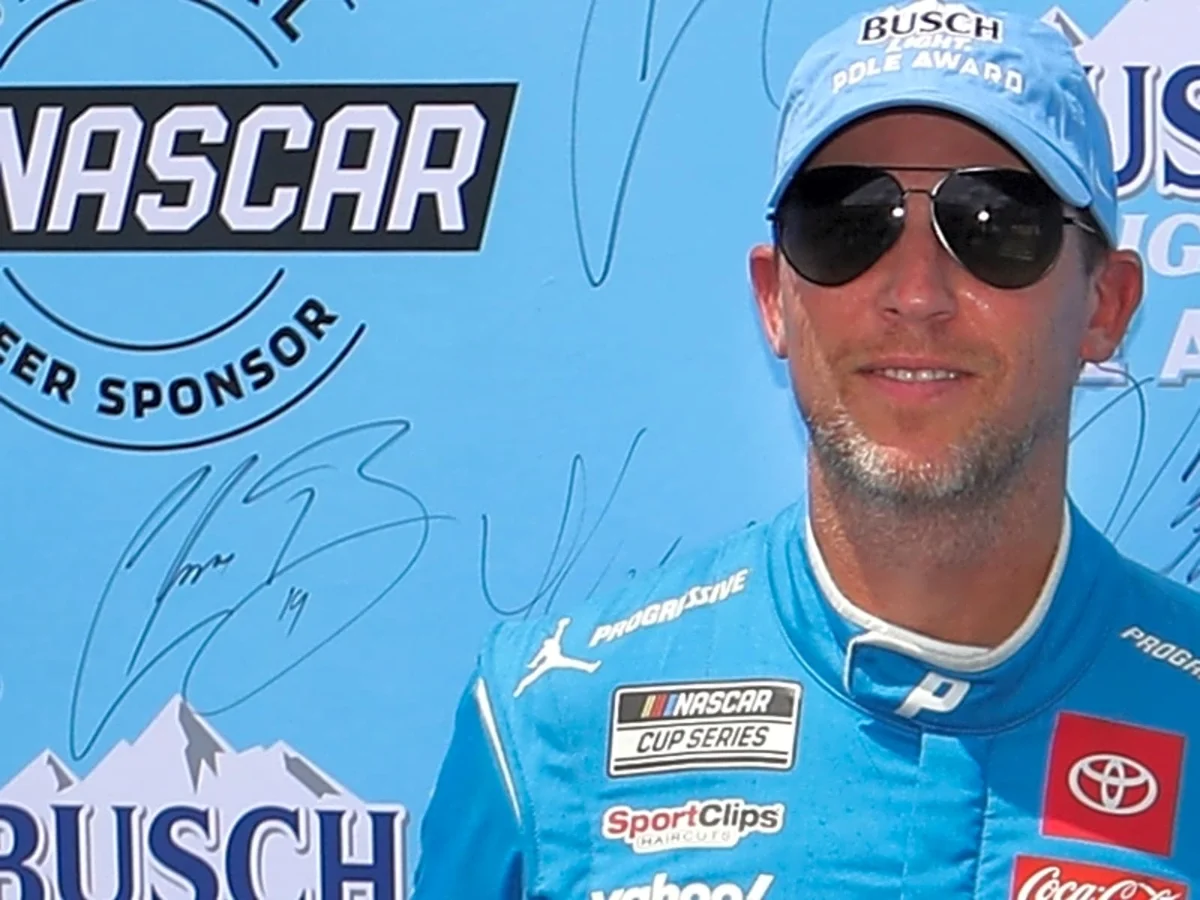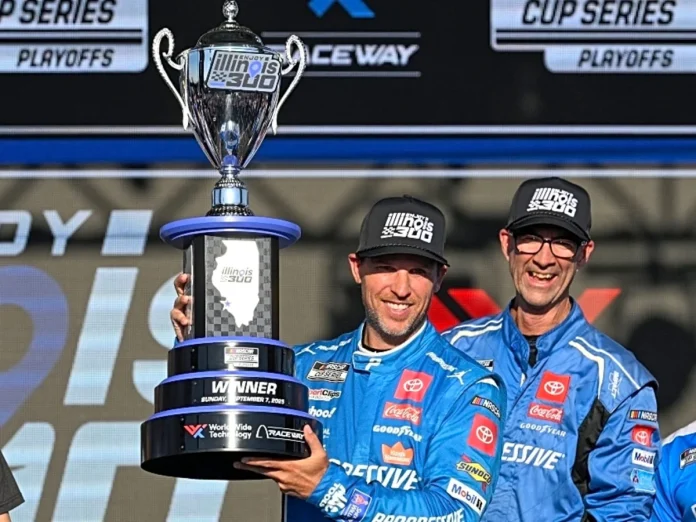Denny Hamlin, the seasoned driver known for his consistent performance on the NASCAR grid, has officially revealed his Denny Hamlin NASCAR retirement timeline, stating he plans to compete for just two more years before stepping away from full-time racing. Hamlin, who is currently 44 and enjoying a standout season with five wins in 2025, shared his candid perspective about his career’s closing chapter, balancing his competitive spirit with personal priorities.
This announcement comes at a pivotal moment both for Hamlin and NASCAR, as the veteran continues to deliver impressive results even as the oldest active racer on the Cup Series. Despite his ongoing championship quest, Hamlin is also considering life off the track, especially after recently expanding his family.
Hamlin’s Notable Career and Recent Successes
Known as one of the most successful and long-standing drivers in the current NASCAR Cup Series lineup, Denny Hamlin debuted in 2005 and has built an impressive resume over two decades. This year, Hamlin leads the field with five victories, reinforcing his reputation as a dominant force and demonstrating that age is not a limiting factor in motorsports success. His recent win at the Gateway playoff Cup race has further solidified his playoff contention and fueled speculation that his elusive first championship could be within reach this season.

Despite the positive momentum on track, the path has not always been smooth. Hamlin’s long career, while marked by many wins, has also been defined by narrow misses in the championship, leaving him determined yet reflective about what comes next. Off the track, the addition of a new son to his family brings a new perspective and likely influences his retirement considerations.
Public Confirmation of Retirement Plans
In a recent, candid conversation on Shannon Spake’s program “The Day After,” Hamlin gave fans and the NASCAR community the long-awaited clarity on his retirement intentions. He openly discussed feeling confidence in racing at an elite level for the next two years, after which he expects to conclude his full-time driving career.
“I feel confident that I have two years left, and that’ll be it. I just want to keep doing this at a high level, and I believe that’s a confident number in which I can still perform at this type of level.”
—Denny Hamlin, speaking on Shannon Spake’s The Day After.
Hamlin’s timeline marks a major shift for Joe Gibbs Racing (JGR), the organization with which he has spent the entirety of his Cup career, and it signals an impending end to one of NASCAR’s most prominent modern careers. His willingness to set a clear limit serves as both an act of transparency for fans and a moment of self-reflection for the driver himself.
Motivation Behind the Decision: Ego and Performance Standards
Hamlin’s decision to announce his Denny Hamlin NASCAR retirement timeline was driven not just by personal or family factors, but also by an internal code regarding performance. Known for projecting a fierce and sometimes divisive presence in the paddock, Hamlin has built a persona partially founded on intense competitiveness and pride.
He has developed a reputation for assertive celebrations and relentless pursuit of victory—traits that have endeared him to some fans and alienated others. Despite his aggressive image, Hamlin maintains composure on track and handles rivalries with a measured approach. Still, the prospect of declining competitiveness has weighed heavily in his calculations about when to leave the sport.
“I have too much ego, too much pride to continue after I’m no longer competitive. I’d rather shut it down early, whatever the result is.”
—Denny Hamlin
His words reflect the underlying emotional tension of his announcement—leaving not because he must, but because he prefers to depart on his own terms, rather than risk fading into obscurity or underperformance. This blend of ego, pride, and high expectations has, according to Hamlin, made it impossible for him to envision continuing as a mere participant rather than a contender.
Impact on NASCAR and Hamlin’s Legacy
Hamlin’s role transcends simple driver statistics. Over the years, he has embraced the narrative of a NASCAR antagonist, willingly embodying the “villain” role and fueling rivalries that captivate fans and elevate the sport’s drama. His exit in two years will mark the departure of one of NASCAR’s most recognizable personalities, leaving a void both in the JGR lineup and in the broader landscape of American stock car racing.
With NASCAR set to undergo significant transformation in the coming seasons, Hamlin’s retirement will coincide with a period of change for the series. While he plans to relinquish his duties as a full-time driver, appearances at select events or in other capacities remain a possibility, ensuring that his influence on the sport could persist even after stepping away from the cockpit.
As discussions around his retirement evolve over the next two years, attention will turn to younger drivers and emerging champions. Notable figures like Kyle Larson, who has received recent bets in his favor from retired champion Kevin Harvick, and other high-profile competitors will shape the next chapter of NASCAR history.
Ultimately, Denny Hamlin’s explicit two-year retirement timeline provides fans, colleagues, and the wider NASCAR community a definitive window to celebrate his contributions and witness the culmination of one of stock car racing’s most intense and emotionally charged careers. His story remains emblematic of the sport’s evolving landscape, reminding observers of the personal complexities and high-stakes decisions that define elite athletes at the top of their game.


